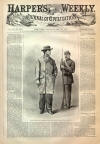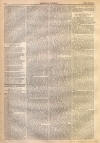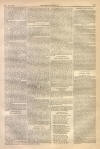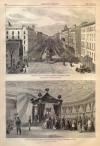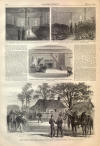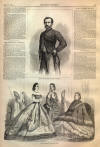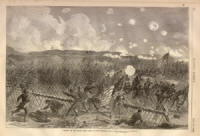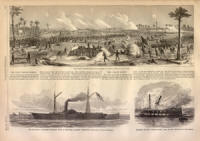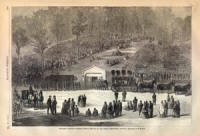General Joseph Johnston's Surrender
|
|
This Site:
|
MAY 27, 1865.] HARPER'S WEEKLY. 333 dangerously ill? No. Her aunt had spoken of a long ramble they had had about a relative's plantation on the left bank of the Alabama ; Maggie had seemed delighted with the evergreen Cherokee roses; and the next week they would be in Montgomery. That evening in his room, with a sad face, between the nervous puffs of our cigars, Chinny told me all the truth. It had come upon her suddenly with a slight illness; his sister was—insane. He told me, too, that among the characteristics of her malady was an intense aversion to me, whom she had loved her whole life long ; it amounted to positive hatred; the mention of my name excited her; she would not consent to see me; I was seeking to perpetrate some hideous wrong ; I was endeavoring, by some infernal process, to extract the heart from out her bosom, and to put my own heart in its place. Chinny went through with these details bravely, though almost choked with emotion. They had not informed me sooner, in the vague hope that change of scene and climate, and the soothing influence of Southern travel, would alleviate or cure her. But by this letter she was becoming daily more indifferent to all things except those in which her former affections had been concerned ; still she passed with many strangers for a person of sound mind. What Maggie's life has been God only knows. I have never seen her since that morning, years ago, when she waved me a passionate good-by from the receding shore. GEN. JOHNSTON'S SURRENDER.GENERAL JOHNSTON surrendered his army to General SHERMAN at Greensborough, North Carolina, on the 26th of April. The previous arrangement entered into between these two commanders on the 18th having been discarded by the Government, the terms of surrender granted to General LEE were made the basis of capitulation. We give on page 332 four illustrations relating to this important event. The house in which the details of the capitulation were arranged belonged to Mr. JAMES BENNETT, and was a plain, unpretending structure, innocent of paint without and within. The small-arms of JOHNSTON'S army were all turned over to the Ordnance Officers of the Department of North Carolina, with the exception of five per cent., which was retained for the use of the men doing guard duty. There are certainly not over ten thousand muskets, all told, in the ordnance building, and as this comprises all the guns turned over there is a very large per cent. to be accounted for under the heads " destroyed" or " carried off." Of the equipments turned over there are remarkably few cavalry sets; for with the exception of the brigade of ROBERT ANDERSON—an officer whose soldierly conduct and bearing impressed even his enemies with a sentiment of respect—the cavalry followed the example of their fugitive President. Lieutenants LYSTER and CLINGMAN, Ordnance Officers of the Department of North Carolina, have these guns and accoutrements in charge, and in their onerous duties have been materially assisted by Lieutenant-Colonel KENNARD, late Ordnance Officer for General JOHNSTON. BREVET MAJOR-GENERAL JAMES H. WILSON. (Captured Jefferson Davis)PARIS FASHIONS FOR MAY.THE first two reunions of the Paris Spring Race Meeting at Longchamps, favored by the most delightful weather on the 17th and 23d ult., brought together a vast number of the real Parisian eli'gantes, who congregated in front of the principal tribunes with their habitual grace. ISABELLE the Bouqueticre was there on both occasions, still wearing M. DELAMARRE'S colors, red and black, and distributed exquisite bouquets of white lilac, roses, and camellias to the ladies, and moss rose-buds to the gentle-men of the Jockey Club or others who elected to be thus florally decorated, for a five-franc piece. The groups of ladies were charming to look upon, wearing, for the most part, unicolored costumes of light blue, white, or stone-colored silk, with long trains, the toilet being completed by one of those pretty little contrivances still termed by courtesy a bon-net, although, in filet, only a fraction when compared to those recently worn. Pearl beads and drops, jet and steel ornaments, and large gold and silver stars, are the usual decorations for chapeaux, to which they are now restricted, the fine weather having almost entirely suspended their application to robes. The steel ornaments enjoy, indeed, a tremendous vogue just now, but persons well informed say that this mode can not last, and that Parisian caprice will very shortly set it aside. Our limited space obliges us to conclude with a multun in part o, to the effect that the materials indicated for the month of May are, in consideration of the advanced state of the season light plain silks, spotted muslins, and patterned foulards ; and, as to the style of the dresses, they should be provided with an ornamental basquine, a high-necked corsage, and a long independent train, capable of being drawn up by the useful tirettes, the use of which has now become so general. THE ILLUSTRATIONS. Fig.1. Evening Dress.—Light green moire antique robe, trimmed round the bottom of the skirt with three rows of darker green velvet edged with narrow blond. The ornaments on the skirt, as well as those on the corsage, are also of green velvet, similarly edged. The head-dress is et m-posed of plaits and curls, anti is decorated by a small bouquet placed just above the chignon. Fig. 2. Walking Dress.—Robe of mauve foulard trimmed throughout with graduating strips of black velvet dotted with steel beads. A white guipure is placed round the bottom of the basquine as well as on the edge of the sleeves. White crape chapeau fanchon, with frosted flowers and blue velvet bow, is the tour-de-tete. Fig. 3. Sortie de Bal.—This graceful opera-cloak may be either in crimson velvet or satin embroidered with gold. It is trimmed with deep white and yellow lama fringe, the capuchon being ornamented with a very light passementerie and gold-colored silk balls. The Bonnets.—These bonnets are drawn from the originals. The body of the first, on the left hand of the en-graving, is in black tulle, with an ornamentation of wild autumn-tinted vine-leaves; the sides are in rich black lace, and the wide black silk ribbons are golden-edged. The second chapeau is in white tulle, studded with gilt beads and ornamented with a golden stripe. The double bavolet is of white lace, and the large drooping ornament on the side consists of the light material called smile; the wide white ribbons completing the bonnet are provided with a deep gilt edging. The body of the third bonnet is in blue silk, with it deep edging of imitation pearl beads and drops; the shell-shaped ornament on the top is of white lace, and precedes the white mule bavolet, from which depend two wide lace streamers ; the long ribbons in front are of blue silk. PARIS FASHIONS FOR MAY, 1865.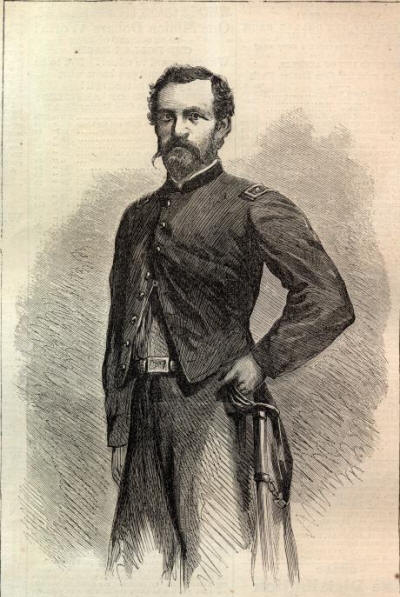 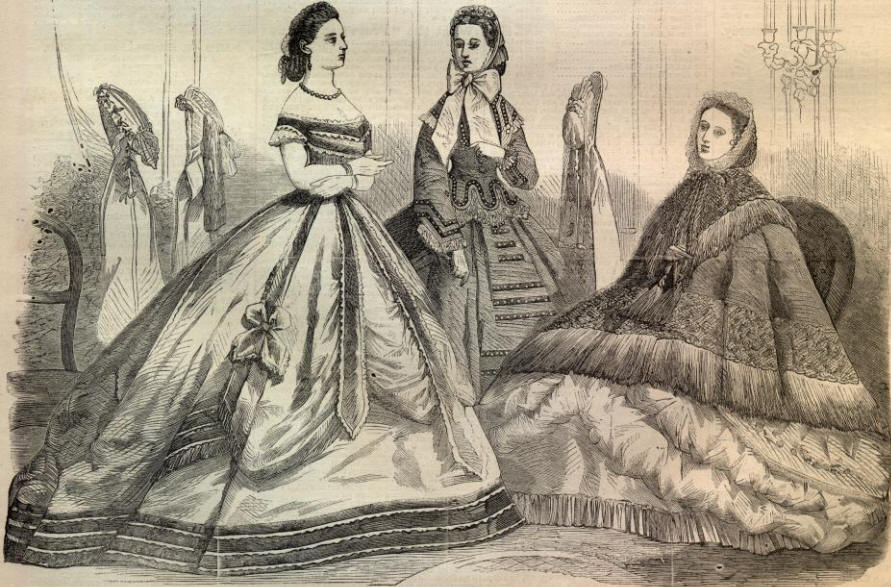 |
||||||||||||||||||
|
|
||
|
|
Site Copyright 2003-2018 Son of the South. For Questions or comments about this collection, contact paul@sonofthesouth.net |
|
|
Are you Scared and Confused? Read My Snake Story, a story of hope and encouragement, to help you face your fears. |
||
